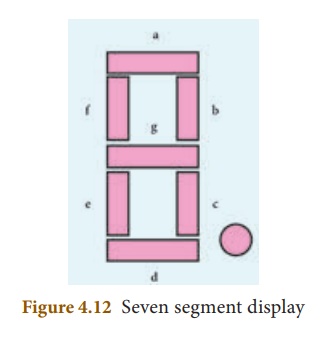Chapter: 10th Science : Chapter 4 : Electricity
LED Bulb
LED BULB
An LED bulb is a
semiconductor device that emits visible light when an electric current passes
through it. The colour of the emitted light will depend on the type of
materials used. With the help of the chemical compounds like Gallium Arsenide
and Gallium Phosphide, the manufacturer can produce LED bulbs that radiates
red, green, yellow and orange colours. Displays in digital watches and
calculators, traffic signals, street lights, decorative lights, etc., are some
examples for the use of LEDs.
1. Seven Segment Display
A ŌĆśSeven Segment
DisplayŌĆÖ is the display device used to give an output in the form of numbers or
text. It is used in digital meters, digital clocks, micro wave ovens, etc. It
consists of 7 segments of LEDs in the form of the digit 8.

These seven LEDs are
named as a, b, c, d, e, f and g (Figure 4.12). An extra 8th LED is
used to display a dot.
2. Merits of a LED bulb
┬Ę
As there is no filament, there is no loss of energy in the form of
heat. It is cooler than the incandescent bulb.
┬Ę
In comparison with the fluorescent light, the LED bulbs have
significantly low power requirement.
┬Ę
It is not harmful to the environment.
┬Ę
A wide range of colours is possible here.
┬Ę
It is cost-efficient and energy efficient.
┬Ę
Mercury and other toxic materials are not required.
One way of overcoming
the energy crisis is to use more LED bulbs.
Related Topics